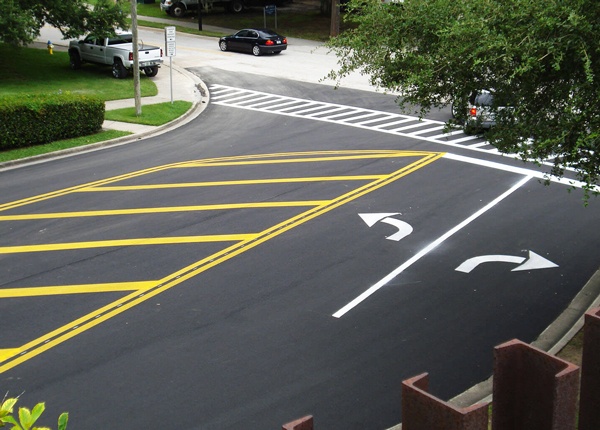
Drawbridge Signs, Signals & Lights for Motorists and Pedestrians
Updated Sept. 18, 2020Drawbridges are sometimes built across bodies of water which are frequented by marine traffic, such as fishing vessels and recreational boats. These mechanical bridges can be closed to road users, split in the center and lifted to create room for boats passing underneath. Drawbridges may be opened at any time during the day or night.
Signs, signals and other warning features are installed on drawbridges, to help keep pedestrians and motorists safe. We discuss these features on this page, along with some safety guidelines to keep in mind when driving or walking across a drawbridge.
When passing over a drawbridge, drivers must never stop on the mechanical steel grid portion of the bridge. If your vehicle breaks down here, you must get out immediately and move to the fixed concrete section of the drawbridge. Remain where you can easily be seen by the drawbridge operator.
Drawbridge warning sign
A yellow, diamond-shaped warning sign featuring the words “DRAW BRIDGE AHEAD” will be posted on the roadway shortly before the bridge. Reduce your speed and proceed with caution when you see this warning sign, as the drawbridge may be open.
Often, a yellow traffic light is installed with the drawbridge warning sign. If this yellow traffic light is flashing, the drawbridge will be closed to road users. Be prepared to stop if you see this yellow warning light flashing.
Drawbridge traffic lights
At the drawbridge, a set of traffic lights will be installed to indicate when motorists may or may not proceed across the bridge. These traffic lights work exactly like ordinary traffic signals at intersections.
- 1

Red signal.
When the traffic light is RED, motorists must stop as the drawbridge is in operation. No pedestrians or vehicles may cross. - 2

Yellow signal.
When the traffic light is YELLOW, motorists must stop unless doing so would be more dangerous than hurrying across the bridge. Yellow signals indicate that the bridge will shortly start to open. - 3

Green signal.
If the traffic light is GREEN, motorists and pedestrians may proceed across the bridge with caution.
Drawbridge gates
Like railroad crossings, many drawbridges are fitted with safety gates that drop down across the roadway when the bridge is in operation. Sometimes, flashing red lights and a warning bell are installed on or near to the drawbridge gate. Never attempt to drive around drawbridge gates, even if they have not yet lowered completely and there is still room underneath. This is very dangerous, besides being illegal.
Drawbridge safety for pedestrians
Drawbridges can be just as dangerous for pedestrians as they are for motorists. Pedestrians seeking to walk across a drawbridge must remember that it may be open at any time. Follow these safety tips for pedestrians when using a drawbridge:
- Do not walk on the roadway. Use the sidewalk or take another route if a sidewalk is not available.
- Wear appropriate footwear when crossing a drawbridge. The metal plates which form the movable part of the bridge can become very hot on warm or sunny days. Do not cross barefoot.
- Do not stop or loiter on the steel grid portion of the bridge.
- If you hear the warning horn sound while you are on the steel grid section, proceed quickly and do not stop until you are clear of the bridge.
- A pedestrian gate may be installed to stop people walking onto the drawbridge while it is in operation. Never walk under or around this safety gate when it is lowered, or in the process of being lowered.
- Do not venture onto parts of the bridge marked with “NO TRESPASSING” signs or other similar signs. These signs mark dangerous areas that are off-limits to the public.
Above all else, pedestrians must never attempt to beat the drawbridge by starting to cross when it is about to open. No matter how late you are or how much time you think you will save by rushing across, remember that it is not worth risking your life.




